We create custom signs using a wide variety of rigid materials (also known as substrates in the sign industry.) Of course, there are a large amount to choose from, but their uses and costs are vastly different. To get the most out of your signs (and your budget), here’s a list of the substrates we most often recommend for basic signage.
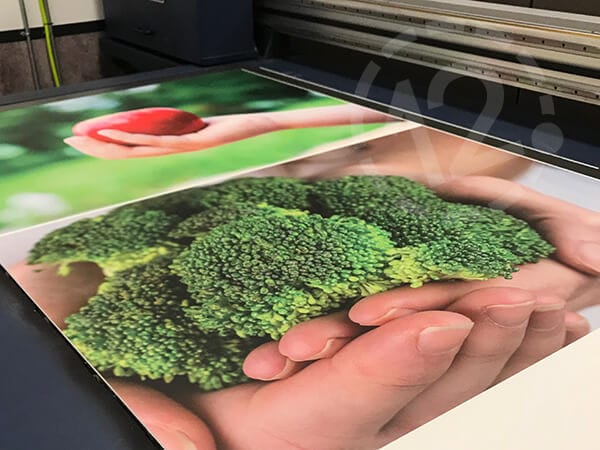 We printed high-resolution graphics on Ultra Board using our flatbed printer to create these beautiful cafeteria signs.
We printed high-resolution graphics on Ultra Board using our flatbed printer to create these beautiful cafeteria signs.
Foam Core
Foam core is our least expensive material and is used for indoor temporary signage. It’s made of lightweight, but fairly sturdy polystyrene board that has a paper coating on each side. It can be used up to 6 months, since it’s susceptible to water damage, scratches and everyday wear and tear.
Ultra Board
Ultraboard is a nice step up from foam core. It’s a more heavy duty rigid substrate with high impact polystyrene surfaces on both sides. Recommended for indoor use, it’s excellent for displaying high resolution artwork. It can be router cut. It’s lightweight, strong, warp-resistant and provides great value.
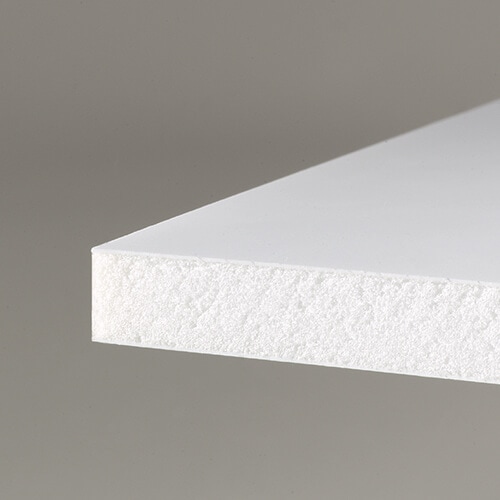 Ultra Board - Photo Credit: Grimco
Ultra Board - Photo Credit: Grimco
PVC
PVC signs are more durable than both foam core and ultra board. PVC is a lightweight plastic material with a smooth, satin surface, which allows for great ink adhesion and consistency. It’s used mostly for indoor signage, but can be used outdoors when laminated. We typically use 3 mm, 6 mm, and 12 mm white and black PVC in our shop. Other brand names for PVC are Sintra, Kapabloc, and Foamacell.
 PVC - Photo Credit: Grimco
PVC - Photo Credit: Grimco
Coroplast
Coroplast is a low cost material predominately used for temporary outdoor signage. It has a solid plastic surface and corrugated core (like cardboard). The most common uses for this material are promotional yard signs, school signs, real estate signs, election signs, directional signs, and building projects.
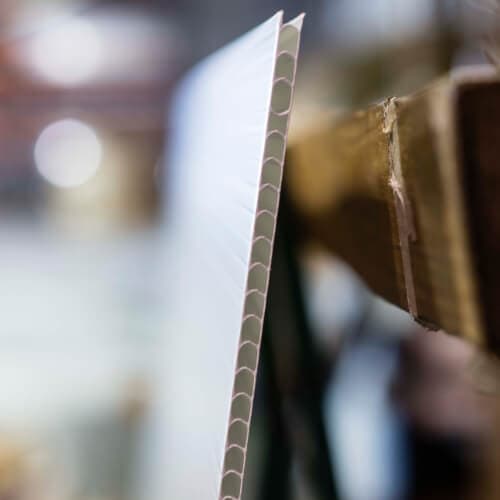 Coroplast - Photo Credit: Grimco
Coroplast - Photo Credit: Grimco
Styrene
Styrene works well for both indoor and outdoor signs. It’s an inexpensive, smooth plastic material with a high quality appearance. Styrene is easy to cut into custom shapes, so the design potential is unlimited. It’s also very flexible and can be conveniently rolled up for storage and transport, which makes it ideal for trade show displays.
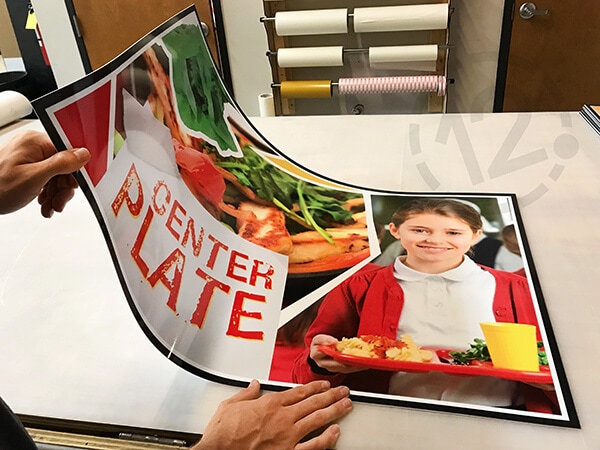 Styrene is thin and flexible but extremely durable, which makes it great for transporting. The surface is also easy to clean when laminated.
Styrene is thin and flexible but extremely durable, which makes it great for transporting. The surface is also easy to clean when laminated.
Max Metal
Max Metal is made of painted aluminum sheets glued to a polyethylene core. It’s lighter than aluminum and can be easily cut or routed. Max Metal is weather resistant, which makes it ideal for long term outdoor and/or indoor signage. We can print graphics on both sides of the painted surfaces of Max Metal or adhere vinyl for a beautiful result. Max Metal sheets are available in 3mm and 6mm thicknesses and in a heavier version with thicker aluminum.
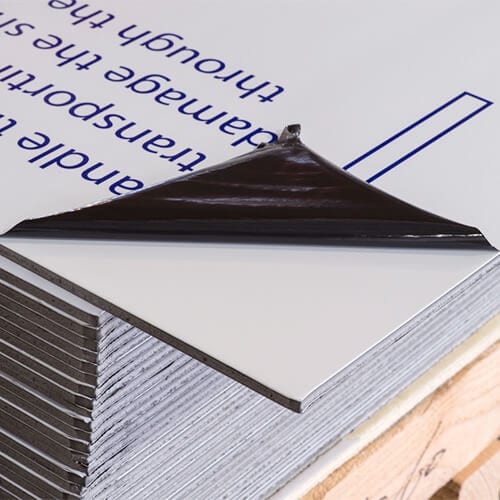 Max Metal - Photo Credit: Grimco
Max Metal - Photo Credit: Grimco
Aluminum
Solid aluminum sheets are ideal for long term or permanent use, such as parking lot signs, reusable real estate signs, traffic signs, park signs, and more. They feature a baked enamel white surface (or clear aluminum) and are sold in a variety of thicknesses. Aluminum signs stay rigid and strong. Aluminum is mostly used for signs up to 36” x 24”.
Substrates for Higher-End Dimensional Signage
The substrates mentioned above are most commonly used for flat, single layered signs. When you’re ready to move into higher-end dimensional signage, such as lobby and logo signs, we often suggest these popular materials:
- Acrylic
- Higher End Metals (Copper, Stainless Steel, Bronze, etc.)
- Wood
Read this article to learn more about these materials and how we use them to create eye-catching dimensional signage: Accentuate Your Brand with Custom Dimensional Signage.
Other Options
Although these are our most popular substrates, we have access to a huge selection of specialty materials if you have unique needs. Just let us know what you're looking for, and we’ll find the right materials for you!
Does your company need new custom signage? Our team is ready to help! In addition to custom signage, we also specialize in branded interiors, vehicle advertising wraps, wall murals, window graphics, architectural signage, trade show displays, and custom projects.
Our shop is located in Franklin, but we serve all of Middle Tennessee, including Nashville, Brentwood, Hendersonville, Smyrna, Mt. Juliet, Lebanon, Spring Hill, and Murfreesboro. Consultations and estimates are always free. Give us a call at (615) 595-6564 or click on the button below. We look forward to working with you!



Leave a Reply